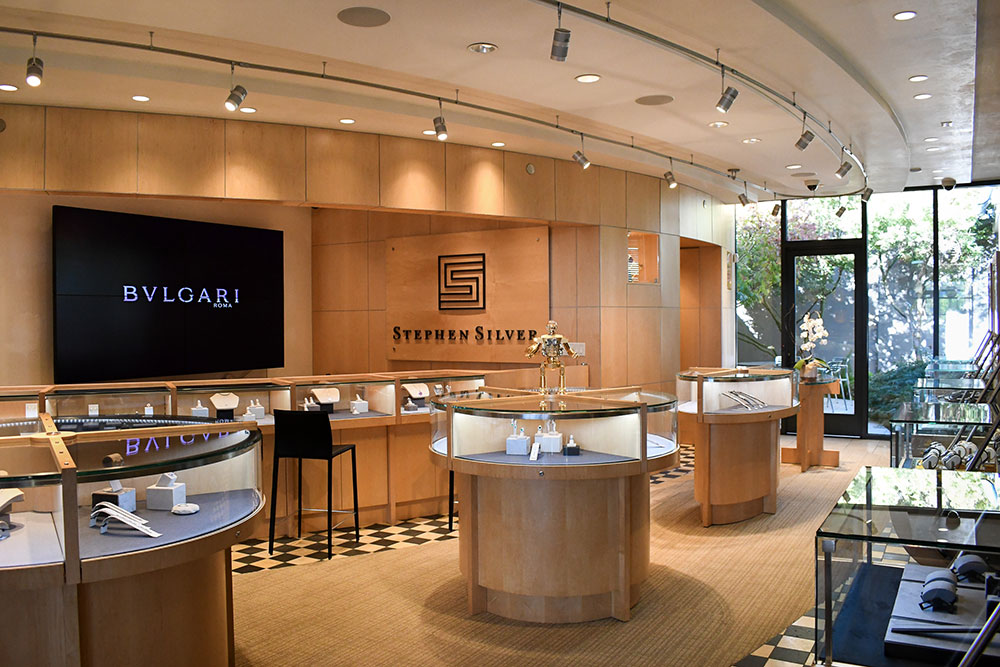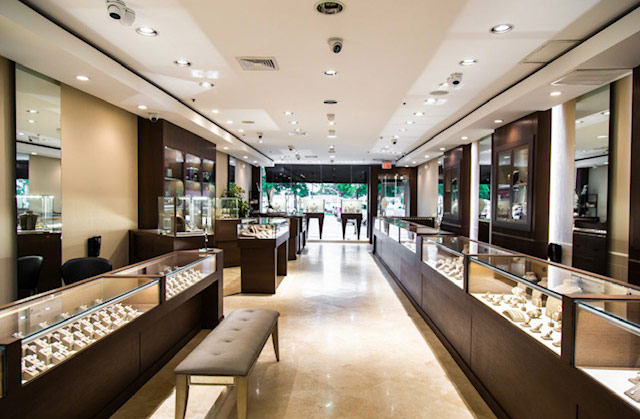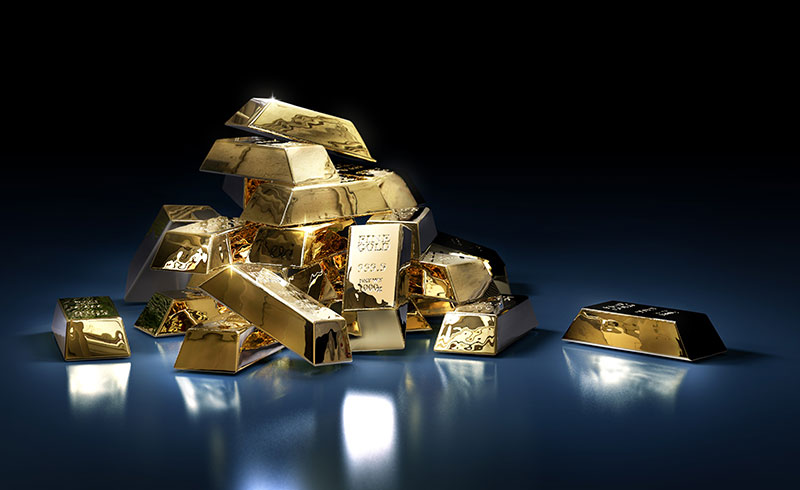The holiday shopping rush may just be beginning, but jewelers have been preparing for it for the better part of 2021.

Shoppers might be looking at their calendars and scrambling to shop for gifts, but for jewelers, this holiday season has been top of mind for months already.
“We started [thinking about the holidays] six to eight months ago, which is really early in our world,” says Bryan Morgan, chief operating officer at Stuller, based in Lafayette, La. “If you’re trying to react right now, you’re probably in trouble.”
Jewelers have two major concerns about potential supply chain disruptions this season: How can they keep a handle on rising costs, and when will shipments arrive? The stakes for getting the answers right are high. When the pandemic curtailed consumers’ ability to spend money on travel, events, and other experiences, people shifted their spending and began purchasing more goods, including jewelry. Market research indicates that jewelry purchases could eclipse pre-pandemic sales by a staggering amount: up nearly 60% from last year, and more than 50% higher than in 2019, according to Mastercard SpendingPulse.
“There’s a demand-supply inversion,” says Jared Silver, president of Stephen Silver Fine Jewelry in Redwood City, Calif. The pandemic “has been good for business, but it’s been challenging to keep inventory in stock. We certainly have fewer pieces of inventory in stock right now.”
The industry is on the verge of a potentially enormous holiday season—provided that goods can make it to their destinations on time, and that retailers can successfully manage the sharpest inflation in a generation. Here’s how experts in sourcing and selling say they’re managing the challenge.

Start Early

The biggest difference that will separate the industry’s haves from its have-nots in the final days before Christmas is having had the foresight to start laying the groundwork much earlier than usual.
“We started buying our product for Christmas in June and July,” says Kathy Corey, co-owner and vice president of merchandising and human resources at Day’s Jewelers, an eight-store retailer in Maine.
Christopher Sarraf, owner of Nuha Jewelers, a retailer with stores in Plainview and Levittown, N.Y., also got a big head start on the season this year. “I placed a lot of orders in September, probably way more than we’ve ever ordered in the past,” he says. “It’s just a surge of demand. When everybody wants the same thing, suppliers are naturally going to increase the price because maybe they can’t keep up.”
Sam Sandberg, chairman of bridal jewelry manufacturer A. Jaffe and president of The Plumb Club, says COVID-19 has triggered bottlenecks at nearly every step of the diamond production process, from mining to cutting to certification. “It’s a global industry, and there are a lot of repercussions,” he says.

Shutdowns and worker shortages led to a drop in mining activity in the early months of the pandemic as well as in cutting and polishing gemstones. There are backlogs at the labs that are grading and certifying stones, and cutbacks on international flight routes make the logistics of importing more challenging and more expensive.
“The issue is the delivery times have certainly extended,” Sandberg says. “What used to take two weeks now takes four weeks because there are fewer flights to bring product over.”
And with more than 11 million job openings in the United States, employers are scrambling to hire truck drivers, package couriers, and retail workers ahead of the holiday rush.
Engage Your Clients
While the messages may seem contradictory, store owners say they want to reassure customers that they have plenty of inventory on hand, and at the same time urge shoppers to complete their holiday gift selections earlier than usual this year to avoid any disappointments.

“The challenge is, we know that historically Christmas is a late-breaking holiday,” says Marc Bridge, cofounder and CEO of At Present, an online startup sales and fulfillment platform for independent jewelry designers. “At this point, we’re not that worried about shipping, but the closer we get to the holiday, that’s going to be an issue.”
At Day’s Jewelers, floor staff rely on proactive sales techniques during the holiday season, reaching out to customers about their needs and helping them choose just the right jewelry gifts. “We’re encouraging people to shop early, especially online, so they can receive packages on time,” Corey says. She also says Day’s is encouraging customers who live and work nearby to place orders online and pick them up in person.
Stuller published a blog post on Nov. 1 to assure buyers that the manufacturer was prepared for the upcoming season: “We have built deep inventories (literally filling our bins to capacity), added staffing throughout the plant to meet manufacturing demand, and increased our ability to take your order by phone or via Stuller.com.”
At Stuller, “all of our history suggests that customers will still come to market in the last two weeks,” Morgan says. “We’re building inventory to be ready for it, but the question is, what does the last mile of the supply chain look like in the last two weeks of holiday?”

Jewelers say it’s especially important to manage expectations surrounding custom orders. “The made-to-order pieces are subject to all sorts of supply chain challenges,” Bridge says. “We started by communicating to customers as early as mid-October.”
Sarraf moved up his cutoff for special holiday orders by two weeks, from shortly before Black Friday to the first week of November. “Turnaround times have slowed down,” he says. He adds that it is important to nurture vendor relationships and go the extra mile to be a good partner by remitting payment promptly.
“As far as turnaround times, that’s become a slight issue, but if you have strong relationships with your suppliers, they’ll probably make it happen for you,” Sarraf says.
Manage Price Increases
Jewelers also are planning ahead—and paying much more—to secure needed supplies of everything from loose stones to finished pieces to packaging materials, with many reporting that supply chain disruptions have impacted the cost of goods and pushed up the prices they pay for raw materials, especially stones.

“A lot of the supply chain, especially from the wholesale side, is playing with an especially strong hand, especially in the white diamond market,” says Silver, who says he is paying roughly 20% more per carat for high-clarity diamonds of 3 cts. and up.
Others note that the increase in diamond prices comes on top of the elevated price of gold, which has hovered around $1,800 per ounce since mid-October. While the price has retreated from its post-pandemic peak in August 2020, it still remains elevated by historical measures. With input prices rising for materials, supplies, and labor, retailers say they have no choice but to pass at least some of those costs on to customers by raising prices.
“Raw material costs going up will ultimately reflect in higher retail prices—we’re in an inflationary cycle, I do believe that,” says Silver, who predicts an across-the-board increase in prices of between 10% and 15% next year. “My entire business is becoming more expensive to operate.”
But raising prices on discretionary goods, even in a category that has remained resilient over the last year and a half, requires staying attuned to what customers will pay as well as what they can pay, retailers say. Costs have risen rapidly, but in some cases, customer expectations have not yet caught up.
“A customer’s expectation is, this product should cost this much,” Bridge says. “There’s just not the ability to charge a customer [extra] for that. In some cases, we need to take a bit less.”
(Gift box on truck and gold bars photos: Getty Images)
